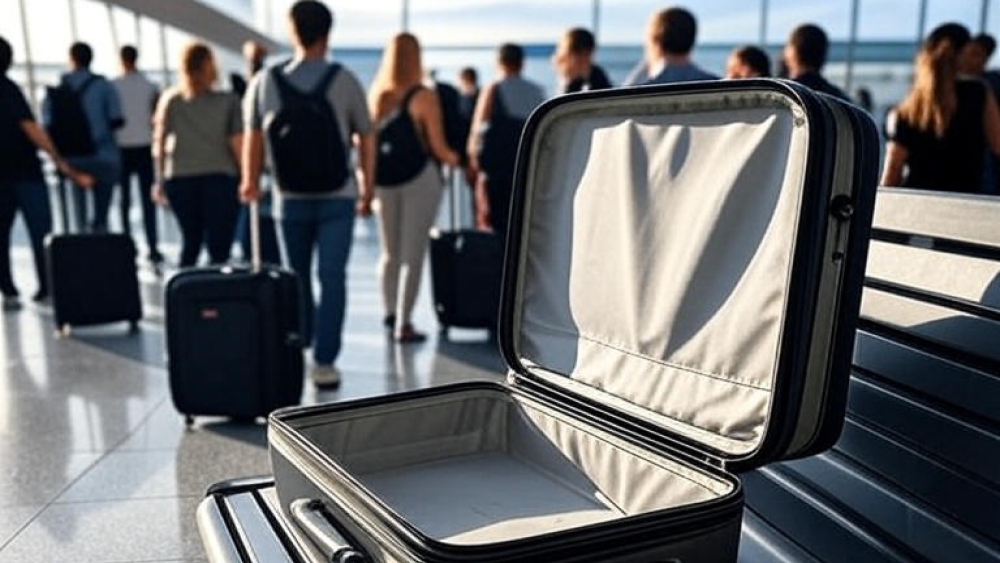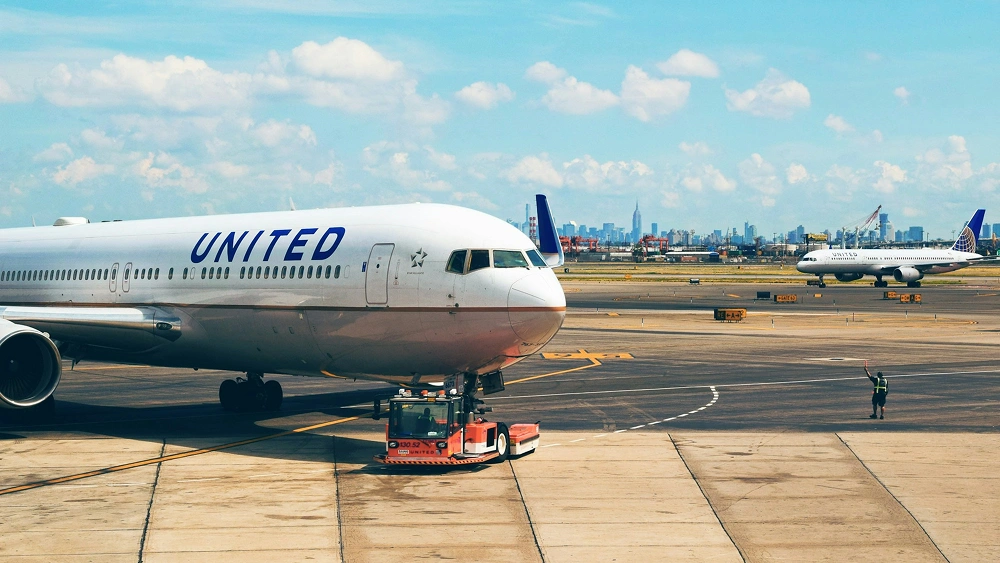- Introduction
- Why Travelers Are Turning Their Suitcases into an Income Source
- Old Methods vs New Platforms
- Peer-to-Peer Luggage Platforms on the Rise
- Top Platforms That Help You Make Money with a Suitcase
- 1. Grabr
- 2. SendBypass
- 3. Airmule
- 4. Roadie
- 5. NannyBag
- Benefits and Risks of Using These Platforms
- How to Maximize Your Earnings
- Legal and Customs Considerations
- Real Life Examples
- The Future of Suitcase-Sharing
- Conclusion
- Earn money and travel for free
- Buy everything from anywhere
- Send your luggage quickly
Introduction Traveling internationally is an exciting adventure, but it comes with one major downside: high costs. Between flight tickets, accommodation, and baggage fees, the expenses quickly add up. On the other hand, shipping items internationally is often slow, stressful, and surprisingly expensive. So, what if your suitcase could do more than carry your clothes? What
Introduction
Traveling internationally is an exciting adventure, but it comes with one major downside: high costs. Between flight tickets, accommodation, and baggage fees, the expenses quickly add up. On the other hand, shipping items internationally is often slow, stressful, and surprisingly expensive. So, what if your suitcase could do more than carry your clothes? What if it could help you earn money on the side, offset your travel costs, or even become a steady income source?
That is exactly what many travelers around the world are starting to do. By using peer-to-peer luggage platforms, people are renting out extra space in their suitcases to carry goods for others. In this article, we’ll dive into how this works, explore the most popular platforms, and weigh the pros and cons so you can decide if this opportunity is right for you.
Why Travelers Are Turning Their Suitcases into an Income Source
In the past, travelers often carried gifts or items for family members abroad. Today, the same idea has evolved into a structured system thanks to technology.
Here are some reasons why this model is gaining attention:
- Expensive traditional shipping: Sending a 10 kg parcel internationally through DHL or FedEx can cost anywhere from $100 to $300, depending on the route.
- Slow delivery times: Standard postal services may take weeks, sometimes even months, for international deliveries.
- Unused luggage space: Many travelers don’t use their full baggage allowance, especially those on short trips.
- The sharing economy boom: From Airbnb to Uber, peer-to-peer platforms have changed how we live, travel, and earn. Luggage sharing is simply the next step.
- Environmental benefits: Using unused space on existing flights reduces the need for additional cargo planes, making it a greener option.
According to a 2023 McKinsey report, more than 30% of travelers are open to sharing their luggage space if the process is safe and easy. This shows a strong demand for solutions that combine affordability with trust.
Old Methods vs New Platforms
Before these platforms existed, people had a few informal ways to earn or save money with their luggage:
- Carrying items for friends and relatives, trusted but limited in scope.
- Buying and reselling products, useful but requires upfront money and some business know-how.
- Informal networks – such as students or migrants helping their communities.
The problem? These methods were unreliable, lacked safety measures, and often caused trouble with customs. New digital platforms now offer a safer, more transparent way to connect travelers with people who need delivery.
Peer-to-Peer Luggage Platforms on the Rise
Peer-to-peer (P2P) logistics is a growing sector of the sharing economy. Instead of relying on giant shipping companies, individuals help transport items. Think of it as “Airbnb for your suitcase.”
According to Statista, the global P2P delivery market is expected to surpass $7 billion by 2030, with an annual growth rate of 20–25%. The growth is driven by rising international mobility, e-commerce, and the need for faster, more personalized delivery.
Top Platforms That Help You Make Money with a Suitcase
Let’s explore some of the most popular platforms that connect travelers with senders, along with their advantages and disadvantages.
1. Grabr
How it works: Grabr is one of the earliest and best-known platforms. Travelers post their trip details, and shoppers request items they want delivered. Most requests involve products purchased abroad that are hard to find locally.
Pros:
- Large global community with millions of users.
- Focus on shopping requests, often high-value items.
- Payment system integrated into the app.
- Active in major cities across North America, South America, and Europe.
Cons:
- Complicated customs issues for some items.
- Travelers may need to buy items up front with their own money.
- High competition among travelers, reducing margins.
- Delivery may be delayed if buyers cannot meet at the airport.
2. SendBypass
How it works: SendBypass focuses on connecting international travelers with people who need to send personal items between countries, especially between EU and non-EU destinations. Unlike platforms that focus on shopping, SendBypass emphasizes peer-to-peer shipping of personal goods.
Pros:
- Special focus on international routes between Europe and non-EU regions.
- A verification system for both travelers and senders, adding trust.
- Simple, user-friendly interface designed for quick matches.
- Opportunity to earn on trips that would otherwise go unused.
- Support for small items, gifts, or personal packages.
Cons:
- Still a growing community compared to older platforms.
- Availability depends on active routes covered by travelers.
- Limited awareness outside Europe.
3. Airmule
How it works: Airmule partners with airlines to let travelers carry parcels on their flights. This system is closer to formal logistics and less about individuals.
Pros:
- Strong partnerships with airlines ensure reliability.
- Travelers don’t need to buy items up front.
- Extra income is guaranteed once accepted.
- Insurance is included for most deliveries.
Cons:
- Limited to certain airports and airlines.
- Less flexibility for travelers.
- Strict baggage requirements and rules.
- Lower community interaction compared to P2P platforms.
4. Roadie
How it works: Roadie is a U.S.-based platform that focuses more on domestic delivery than international. Travelers use their cars or flights to carry packages.
Pros:
- Backed by UPS, offering strong trust and reliability.
- Works well for same-day or urgent deliveries.
- Large coverage in the U.S.
- Insurance and customer support included.
Cons:
- Mostly domestic, not ideal for international travelers.
- Limited appeal for people outside the U.S.
- Earnings vary depending on distance.
5. NannyBag
How it works: NannyBag isn’t a delivery platform in the traditional sense. Instead, it allows travelers to store or transport luggage for others, often useful for tourists.
Pros:
- Great for short-term storage needs.
- Strong presence in tourist-heavy cities.
- Partnerships with local businesses.
- Useful for people with long layovers.
Cons:
- Not a true peer-to-peer shipping solution.
- Earnings potential is limited.
- Works best only in tourist cities.
Benefits and Risks of Using These Platforms
Benefits:
- Earn extra money while traveling.
- Save costs for senders.
- Faster delivery compared to traditional mail.
- Meet new people and build networks.
- Eco-friendly: reduces demand for cargo flights.
Risks:
- Customs checks and regulations.
- Trust and safety concerns.
- Limited availability depending on routes.
- Income is not always consistent.
- Possible restrictions on certain goods (electronics, liquids, food).
How to Maximize Your Earnings
If you want to turn suitcase-sharing into more than pocket money, consider these tips:
- Plan ahead: Register your trip at least 2–3 weeks before departure.
- Choose popular routes: Flights between the EU, U.S., and Asia usually have high demand.
- Be selective: Accept items that are legal, safe, and easy to carry.
- Build your profile: Positive reviews increase trust and your chances of getting requests.
- Communicate clearly: Confirm meeting points, delivery times, and payment.
Legal and Customs Considerations
It’s important to understand that each country has its own customs laws. Carrying prohibited items can result in fines or confiscation. Platforms usually provide guidelines, but the responsibility ultimately falls on the traveler.
Some countries also limit the value of goods that can be brought without declaring them. For example:
- In the EU, goods worth more than €430 must be declared.
- In the U.S., travelers must declare goods valued over $800.
Travelers should always check official customs rules to avoid problems.
Real Life Examples
- Students: Many international students use suitcase-sharing to fund their studies, especially when flying back home with empty luggage.
- Migrants: Migrants often earn by carrying items for their community while traveling back and forth.
- Tourists: Casual travelers use it to cover part of their flight ticket or accommodation costs.
- Small businesses: Entrepreneurs rely on these services to receive goods faster and cheaper than with cargo companies.
The Future of Suitcase-Sharing
As international travel grows, so does the opportunity for peer-to-peer delivery. With more awareness and better safety systems, suitcase-sharing could become as common as Airbnb or Uber. Investors are also watching this market closely, as it provides an eco-friendly, low-cost alternative to traditional logistics.
Conclusion
Turning your suitcase into a source of income is no longer just an idea; it’s a growing trend. Platforms like Grabr, SendBypass, Airmule, PiggyBee, Roadie, and NannyBag are making it easier than ever to connect travelers with senders. Each platform has its own strengths and weaknesses, so the best choice depends on your travel plans and personal preferences.
The future of suitcase-sharing looks bright as more people look for affordable, fast, and sustainable ways to move goods across borders.
What about you? Have you ever tried making money with your suitcase? Share your experience in the comments and let’s learn from each other!




